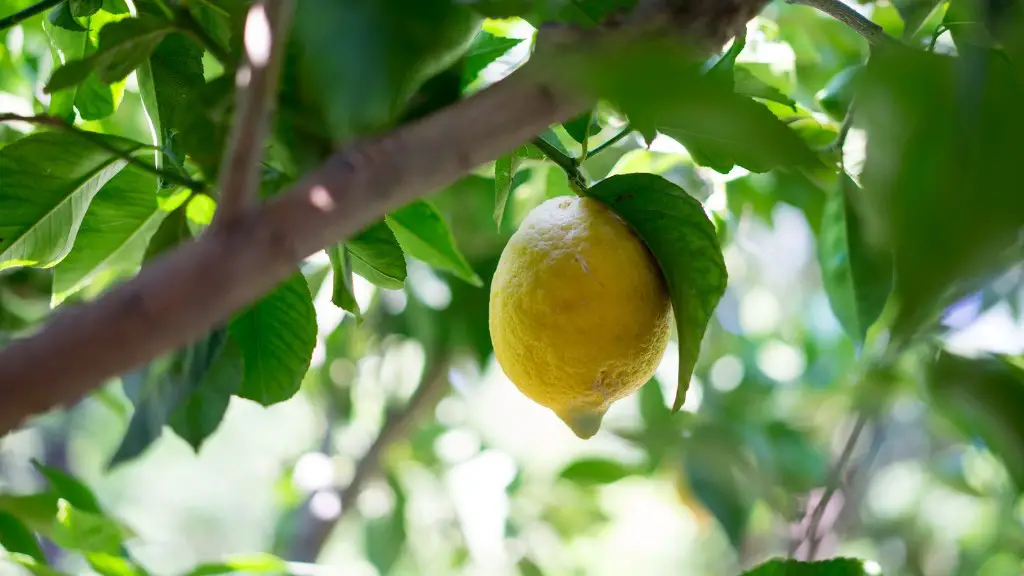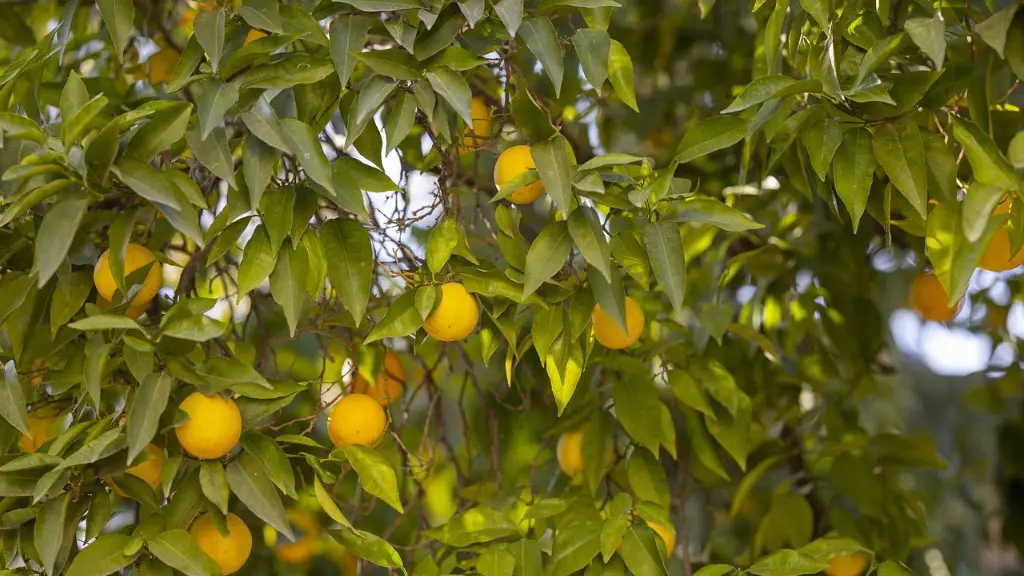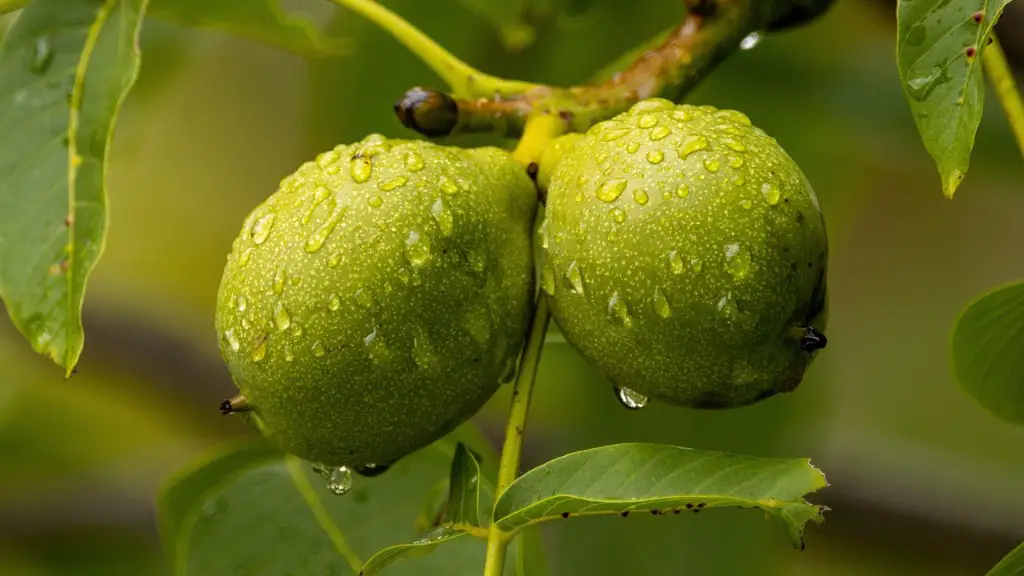Indoor lemon trees are a great way to grow your own lemons, no matter what the climate or season is like. You can enjoy the freshness of the lemons for years. Growing an indoor lemon tree is easy with just a few simple steps:
First, buy a citrus tree suited to indoor growth. Choose a small-sized tree and make sure it is healthy before purchasing. Lemon trees grow best in soil that is pot-friendly and drains well. Make sure to add fertilizer when planting.
Next, place your tree in the sunniest spot in your home. At least five hours of natural light is ideal. Keeping your tree at temperatures of 65 – 70 degrees Fahrenheit is best. You should also place your tree near a window or patio door to get some of the outside air blowing around it.
Watering lemon trees is essential for them to thrive. Water only when the topsoil is dry, and never overwater. You will need to repot your tree every two to three years to ensure plenty of space and nutrients for growth. Avoid over-fertilizing, as lemon trees do not like too-much nutrient.
In addition, prune your indoor lemon tree periodically. Prune away any dead or weak branches, and remove any overproductive branches. Pruning the tree helps to maintain a good shape and also allows for air circulation and light penetration.
Finally, make sure to pollinate your lemon tree to get the best fruit production. Pollinating can be difficult indoors, so it’s important to provide a means of pollination, such as hand-pollinating with a small brush.
Choosing the Right Variety of Lemon Tree
When growing an indoor lemon tree, it’s important to choose the right variety for the best success. Dwarf varieties are the most popular for indoor growth since they are naturally smaller and don’t require as much pruning. Varieties such as ‘Meyer’ tend to be well-suited for indoor growth because they produce more fruits than other varieties.
Another popular indoor lemon tree is the ‘Eureka’ variety. This tree is slightly larger than dwarf varieties, and it produces an abundant crop of lemons year-round. It is also drought-tolerant and disease-resistant, making it a great option for an indoor environment.
The ‘Lisbon’ is also a great choice for an indoor lemon tree. This tree produces a large amount of fruit and is smaller in size. It is also resistant to disease and grows well in warm climates.
Finally, the ‘Lemon Tigre’ variety is a great choice for an indoor lemon tree. This tree produces large lemons with a thin rind and a strong flavor. It takes a little longer for the lemons to ripen than other varieties, but it is worth the wait!
Providing Optimal Growing Conditions
When growing an indoor lemon tree, it is important to provide optimal growing conditions to ensure the best results. Make sure the tree is placed in a location that has indirect sunlight and is away from any drafts. The soil should be well-draining, yet moist. A mixture of equal parts soil, perlite, and peat moss is ideal, or you can use a special citrus soil.
In addition, you should water your tree approximately once a week to keep the soil moist. Be sure to use a fertilizer that is specifically formulated for citrus trees, such as a citrus-based fertilizer. You should also prune your tree periodically to keep the shape and to promote healthy, new growth.
Finally, make sure to pollinate your tree in order to get the best fruit production. This can be done manually or by purchasing a pollinator, such as a bee-friendly motorized butterfly, to assist in the process.
Protecting Against Pests and Diseases
It is important to protect your indoor lemon tree from pests and diseases. Make sure to inspect your tree regularly for signs of aphids, whiteflies, mealybugs, and other pests. If you spot any of the pests, use an insecticide specifically formulated for citrus trees.
In addition, watch for signs of diseases, such as leaf spot or root rot. Once you spot the signs of a disease, it is important to immediately take action. Use a fungicide specifically formulated for citrus trees, and make sure to follow the instructions carefully.
Finally, it is important to keep the soil of your lemon tree pH balanced in order to help protect against disease. The ideal soil pH for lemon trees is 6.0 to 7.0.
Harvesting the Lemons
Once your lemon tree has grown to maturity, it’s time to harvest the lemons. First, use a pair of scissors to carefully cut the lemon off the tree, making sure not to damage the branch. Lemons should be ready to harvest when they are soft but still slightly firm.
Next, place the lemons in a basket or container to protect them from bruising. Make sure to handle them carefully as they are fragile and can easily get damaged. You should also store lemons in a cool, dark place, away from direct sunlight.
Finally, make sure to use the lemons within a couple of days of harvesting them, or you can store them in the refrigerator to extend their shelf life. They can also be stored in the freezer for several months. Fresh lemons add a wonderful flavor to many dishes and make great drinks!
Propagating Your Tree
Once your indoor lemon tree is established, you may want to propagate it to create another tree. Grafting is one popular method of propagating a lemon tree. Grafting involves taking a branch from the parent tree and attaching it to the rootstock of an existing tree.
Another option is to grow a lemon tree from seed. Lemon seeds require specific conditions in order to germinate properly, so you will need to provide the right environment. Find a warm, dry location with plenty of sunlight and well-draining soil. Make sure to keep the soil moist, but not overly wet. It can take up to six weeks for the seeds to germinate.
Finally, once the seed has germinated, you will need to transplant the seedling into a new pot with fresh soil. Make sure the pot is large enough for your seedling to grow properly, and provide the same conditions as with a lemon tree grown from a tree.


